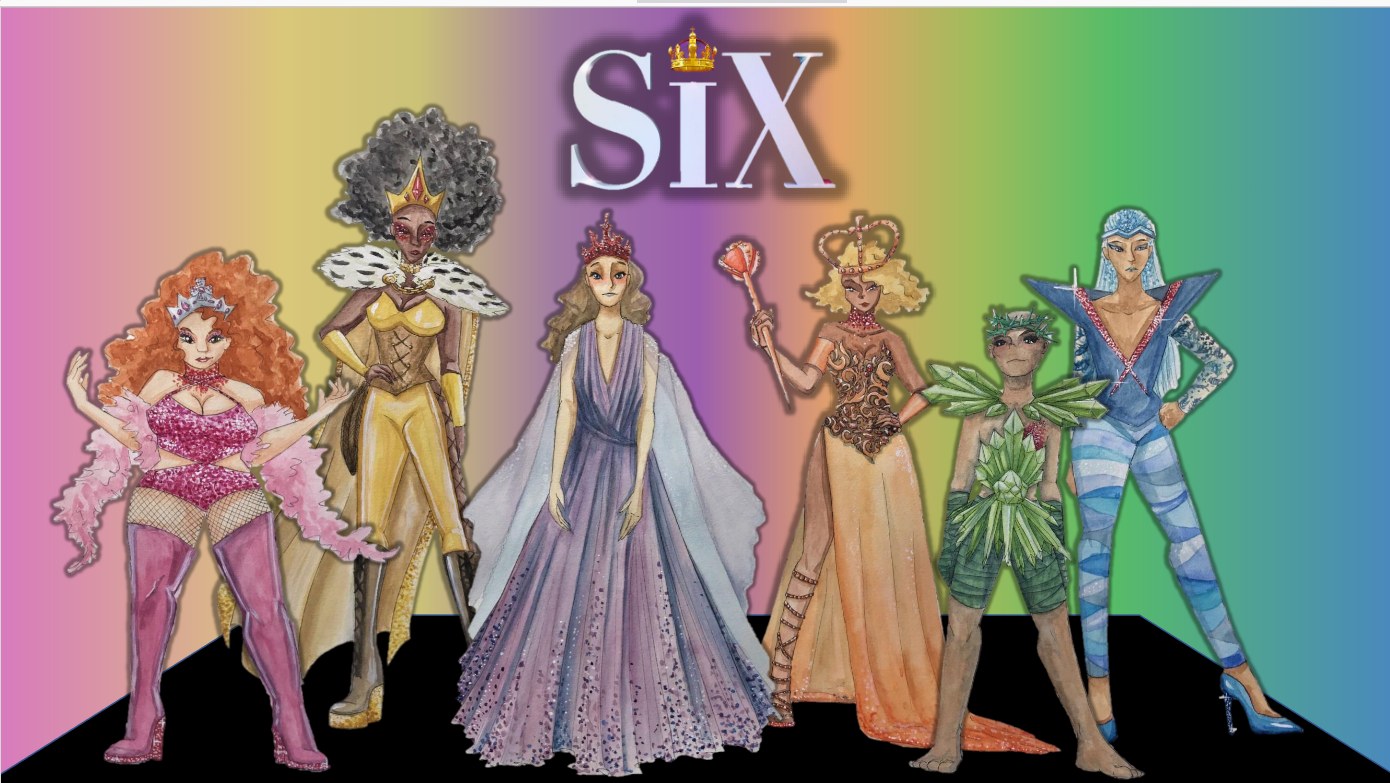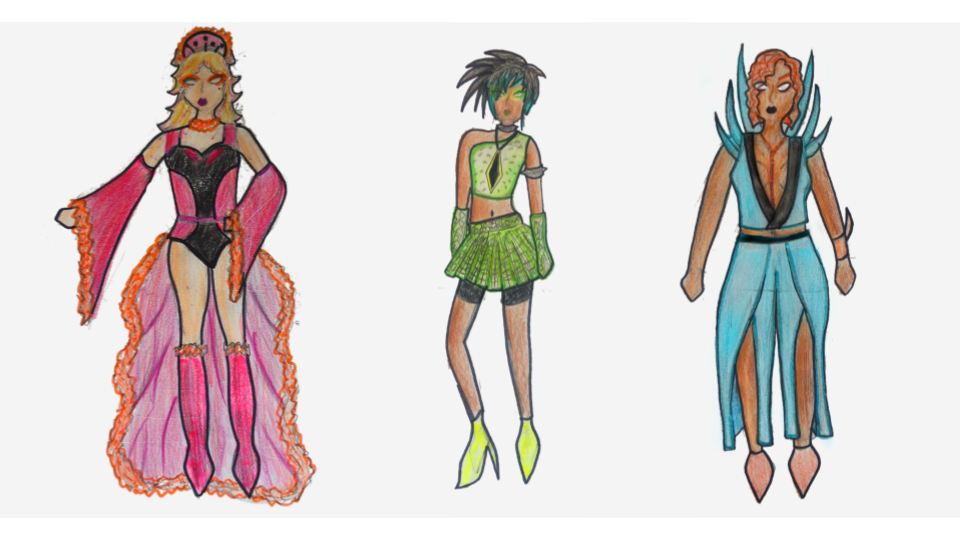People In This Story

Departments In This Story
If Frances Nelson McSherry is doing her job right, the costumes she designs for a musical seem effortless, a natural extension of each of the characters. But McSherry, who teaches costume design in the Department of Theatre knows that a show’s costumes can spin off in many directions. To prove it, she asked her costume design students to choose a musical, any musical, and design the costumes for it. Some students were familiar with their chosen shows; others had never seen them before. One of the titles chosen by several students in her classes last fall and spring was the smash hit Six. The tale, written as a singing competition, follows the six wives of Henry VIII as they explain why each of them was the most betrayed by the king. The students who chose Six put their own spin on how each queen should be dressed.
How to Dress a Queen
Gabriela Slade’s original designs use historical fashions for inspiration. “We went with more historic-based necklines, doublets, and sleeves, and then used contemporary fabric to create a fusion style with Tudor details in contemporary color and finishes,” Slade told Playbill. Royal portraits of each of the queens provided part of the inspiration. Other, more modern inspirations included the Met Gala and pop stars like Beyonce and Miley Cyrus.

This research ensured that the references and silhouettes were right for the time period. Then came the fun part: “stretching of the historical silhouette,” in McSherry’s words, to make the costumes appeal to modern audiences. “I believe it’s more important to connect with the audience. [It] helps us relate more to these characters,” says McSherry.
And then – after all that research and work designing the costumes – they need to disappear. “[Costumes] establish the look [of the characters] at the beginning of the show,” McSherry says. After that initial introduction, “[n]obody should be aware of the clothes.” If an audience’s gaze lingers on the costumes, they will miss the story unfolding in front of them.

Slade’s original designs put this idea into action. There are small details meant to evoke the feeling of an era: four-part panel skirts nod to the skirts from the Tudor period. A “B” necklace winks from Anne’s neck, an homage to the real necklace the beheaded queen wore in her royal portraits. Catherine Parr, the last of the ex-wives (and the one to outlive Henry) dresses apart from the others, in a rich blue jumpsuit with puff sleeves drawn from men’s fashion. But none of these details overshadow each of the queens’ performances. Instead, they all come together to make something cohesive.
From Classroom to Stage
When designing costumes for Six, McSherry’s students took a different approach. Instead of starting with historical research, Selin Yuksel, a computer science and theater double major, focused on the emotional journey of each of the queens. “The production focuses on breaking free, becoming one’s own person, change, and the solidarity and friendship formed between the characters,” she explains. “I assigned each character a color of the rainbow … with Henry represented by the color red, the first color in the rainbow that ties them all together.”

These pops of red functioned similarly to the details used by Slade; red appears across Anne Boleyn and Katherine Howard’s necks (pink and orange, respectively) – a wonderful nod to how Henry dealt with their supposed infidelity (beheading), while Catherine Parr’s crown drips in red.
Another one of McSherry’s students, Sydney Lerner, a communications and media studies major, looked towards the animal kingdom for inspiration. “I watched the musical and thought about animals with similar habits, temperaments, and values as each character.”

“From there, I looked to both modern and 1500s silhouettes for my inspiration. I thought a lot about movement for each of these looks. Did I want a piece to flow smoothly or did I want it to make drastic rigid motions?” In keeping with the pop music and lyrics, she wanted to add a bit of melodrama and camp to the finished looks. “To amp up the camp, I [used a] not-so-nature inspired palette: neon colors and blacks. I want[ed] the costumes to be rigid, yet have motion on connecting axes that make them interesting during the pop-star-esque dance sequences.”

“The bright and punchy look of everything provide[d] an ironic contrast to the melodrama of the girls’ stories and [a] nod to the extravagance of depicting Henry VIII’s wives as members of a pop band. If people think it looks tacky, good. It should.”





